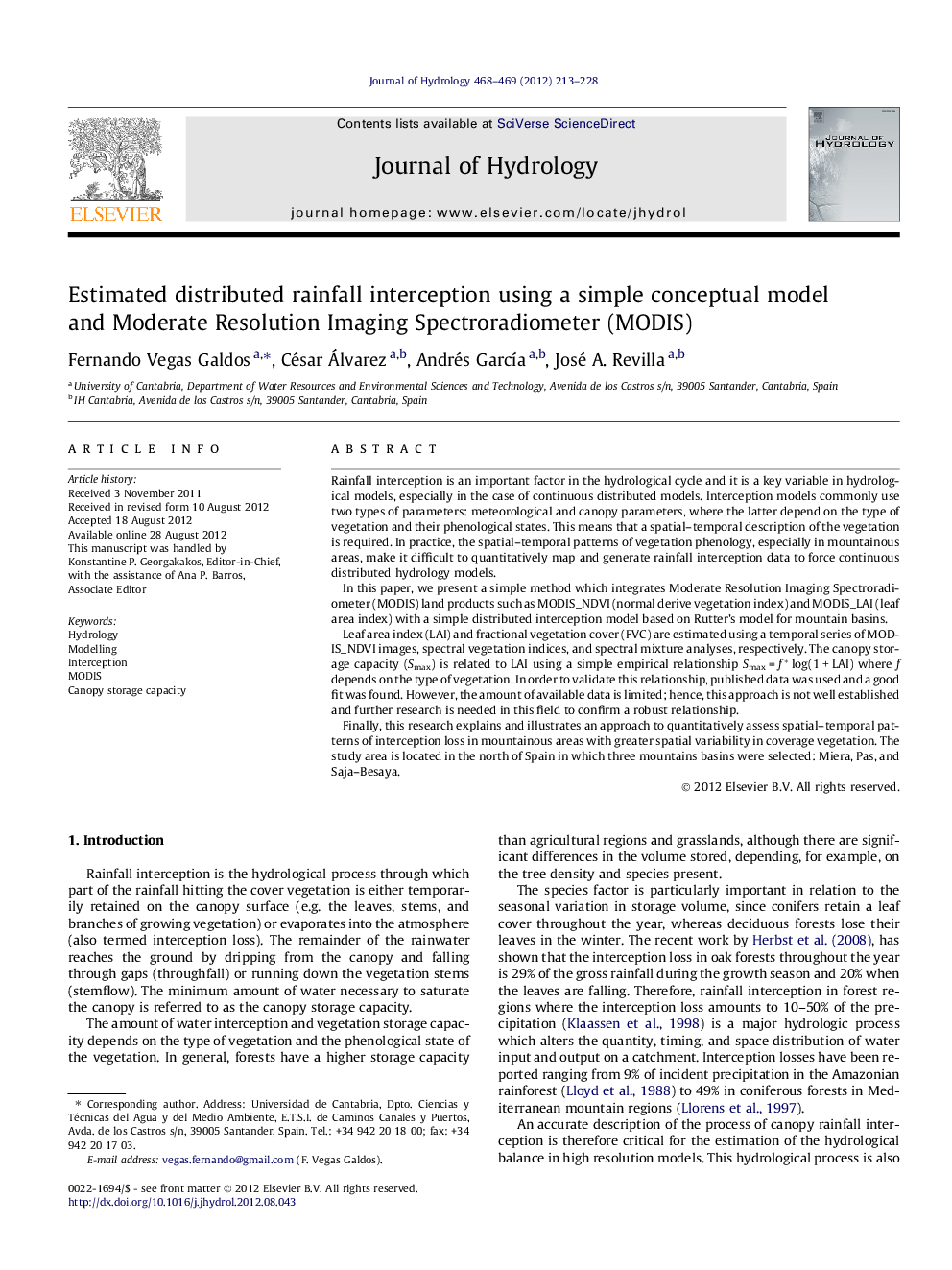| Article ID | Journal | Published Year | Pages | File Type |
|---|---|---|---|---|
| 4576791 | Journal of Hydrology | 2012 | 16 Pages |
Rainfall interception is an important factor in the hydrological cycle and it is a key variable in hydrological models, especially in the case of continuous distributed models. Interception models commonly use two types of parameters: meteorological and canopy parameters, where the latter depend on the type of vegetation and their phenological states. This means that a spatial–temporal description of the vegetation is required. In practice, the spatial–temporal patterns of vegetation phenology, especially in mountainous areas, make it difficult to quantitatively map and generate rainfall interception data to force continuous distributed hydrology models.In this paper, we present a simple method which integrates Moderate Resolution Imaging Spectroradiometer (MODIS) land products such as MODIS_NDVI (normal derive vegetation index) and MODIS_LAI (leaf area index) with a simple distributed interception model based on Rutter’s model for mountain basins.Leaf area index (LAI) and fractional vegetation cover (FVC) are estimated using a temporal series of MODIS_NDVI images, spectral vegetation indices, and spectral mixture analyses, respectively. The canopy storage capacity (Smax) is related to LAI using a simple empirical relationship Smax = f * log(1 + LAI) where f depends on the type of vegetation. In order to validate this relationship, published data was used and a good fit was found. However, the amount of available data is limited; hence, this approach is not well established and further research is needed in this field to confirm a robust relationship.Finally, this research explains and illustrates an approach to quantitatively assess spatial–temporal patterns of interception loss in mountainous areas with greater spatial variability in coverage vegetation. The study area is located in the north of Spain in which three mountains basins were selected: Miera, Pas, and Saja–Besaya.
► We integrated a simple distributed interception with MODIS land products. ► New equation to estimated canopy storage parameter is proposed. ► The seasonal phenology of a species influences in interception process. ► MODIS, can contribute significantly to obtaining quantitative estimates of rainfall interception.
